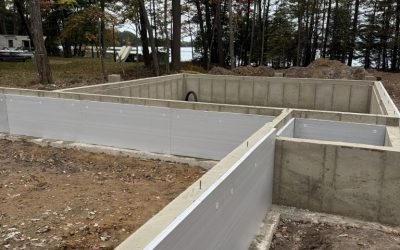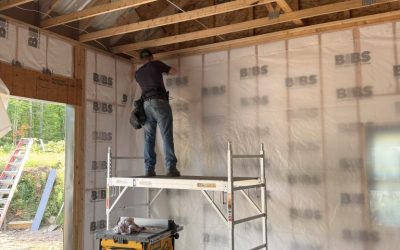When we discuss ways to make new homes more energy-efficient, the most obvious considerations are usually better windows, air sealing, efficient HVAC, and insulation.
What we don’t typically consider are the ways that wall studs, concrete, or other building materials also contribute to a home’s overall efficiency.
However, these materials can contribute to a phenomenon known as “thermal bridging.” When we discuss holistic ways in which to build the most energy-efficient homes, it’s wise to take the issue of thermal bridging into account.
Luckily, when constructing a new home, there are steps a builder can take to reduce this problem and build a considerably more energy-efficient, comfortable house. Today’s blog will introduce the concept of thermal bridging and discuss how builders can minimize the issue in their new construction.
What is Thermal Bridging?
Simply put, thermal bridging is when a conductive material creates a “bridge” that allows heat to travel through a wall. Most common building materials (wood, concrete, or metal) are more conductive than insulation and therefore allow bridging.
Stick-built homes, for example, are constructed using wood studs placed 16” apart. Fiberglass insulation is then placed in between each stud. The insulation inside the wall cavities slows heat loss — but only in between the wood studs. The uninsulated wood acts as a “bridge,” or pathway, allowing for a surprising amount of energy loss.
In the summer, the thermal bridge lets heat conduct into an air-conditioned interior. In the winter, the reverse is true, as heat in the air conducts out of the home through these bridges in between the insulated cavities.
Of course, this leads to increased heating and cooling costs for the homeowner. Thermal bridging can also present a comfort issue. If you live in a cold climate, you may have noticed that your interior walls become chilly in the winter. This is thermal bridging in action.
How Can Builders Reduce Thermal Bridging?
The best time to address the problem of thermal bridging is during construction when the building materials and wall cavities are readily accessible.
One solution is to use advanced framing techniques. From energy.gov., advanced framing “refers to framing techniques designed to reduce the amount of lumber used and waste generated in the construction of a wood-framed house. These techniques boost energy efficiency by replacing lumber with insulation material while maintaining the structural integrity of the home.”
By framing a home in this way, whole-wall R-value is improved by maximizing insulated wall area and by reducing the amount of material that allows for thermal bridging.
Another option is to install a thermal break on the interior or exterior of the framed cavity.
This can be accomplished by adding a layer of rigid insulation to the interior or exterior surface to greatly reduce the thermal bridging.
RVI offers consulting services for builders who are interested in learning more about advanced framing techniques. These techniques use products found at your local lumber yard and are easily adapted by your existing crew. Pair these framing and building techniques with our high-performance insulation and air sealing services, and builders end up with an incredibly efficient new build.
Get Started By Contacting RVI
As a home builder in a cold climate, you know that constructing efficient, comfortable homes is a key aspect of providing value to your customer. Our Rhinelander, Wisconsin-based building science experts offer advanced framing consultations and insulation services for builders.
If you are interested in learning more about thermal bridging, its effects on home energy use, and the ways that advanced framing can help reduce the problem, get in touch with us today!



